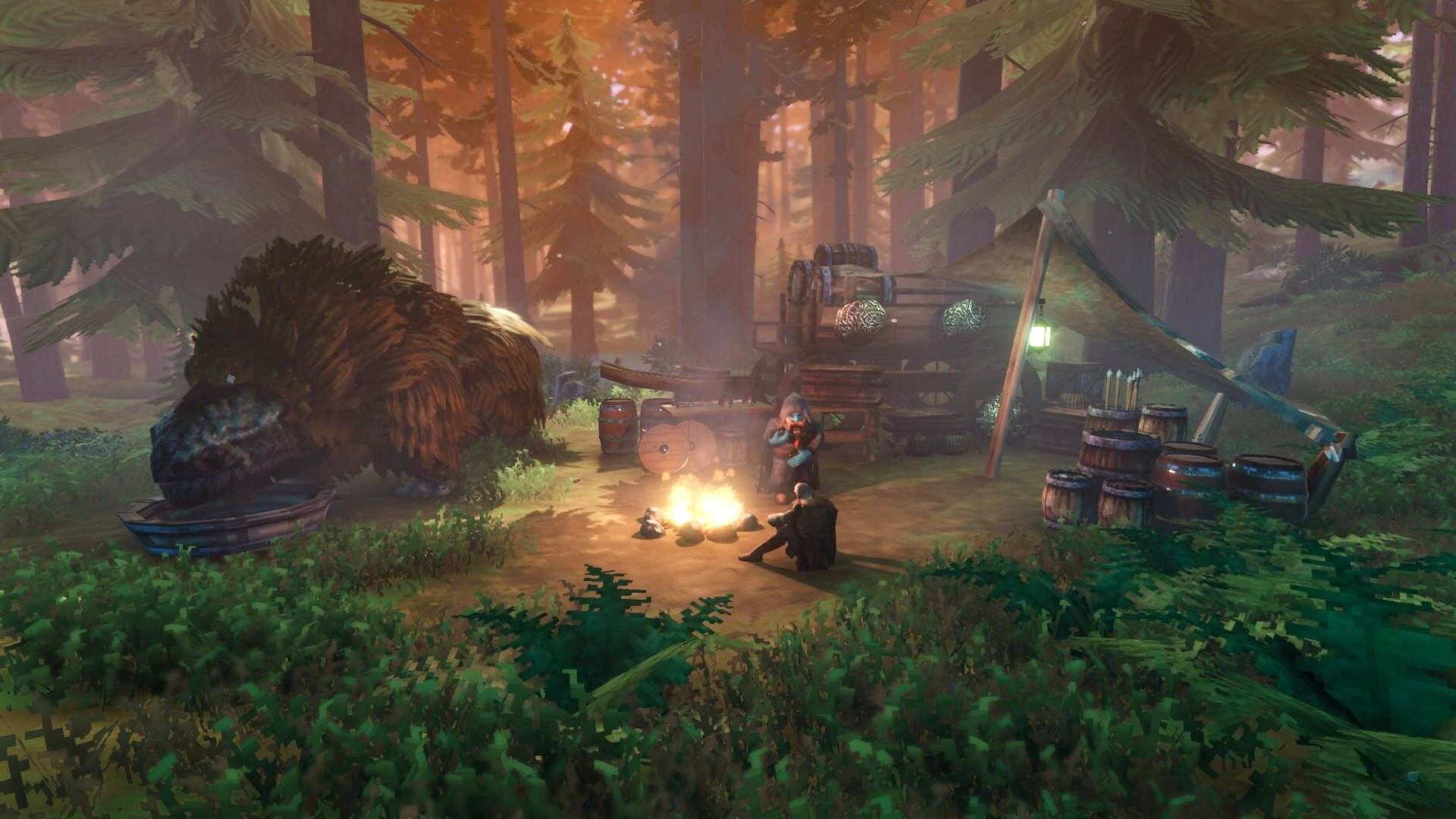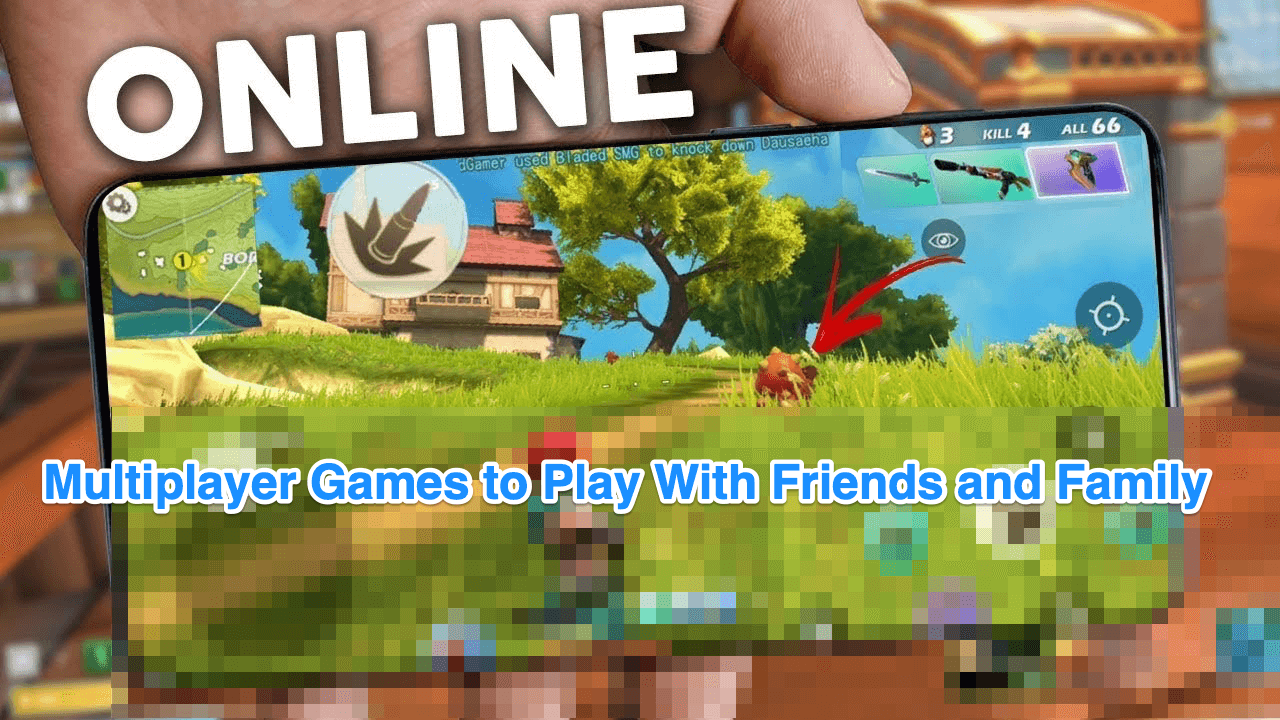The Evolving Landscape of Free-to-Play Multiplayer Games in 2025
Related Articles: The Evolving Landscape of Free-to-Play Multiplayer Games in 2025
Introduction
With great pleasure, we will explore the intriguing topic related to The Evolving Landscape of Free-to-Play Multiplayer Games in 2025. Let’s weave interesting information and offer fresh perspectives to the readers.
Table of Content
The Evolving Landscape of Free-to-Play Multiplayer Games in 2025

The realm of free-to-play multiplayer gaming has undergone a dramatic transformation in recent years, fueled by technological advancements, evolving player preferences, and a growing global community of gamers. As we approach 2025, this landscape is poised for even greater innovation and accessibility. This article delves into the key trends shaping the future of free-to-play multiplayer gaming, exploring the diverse genres, innovative business models, and the impact of emerging technologies.
The Rise of Free-to-Play: A Paradigm Shift in Gaming
The free-to-play model has revolutionized the gaming industry, offering a barrier-free entry point for players of all backgrounds. This accessibility has fostered a massive global community, driving unprecedented growth in the gaming market.
Key Trends Shaping Free-to-Play in 2025
1. Embracing Inclusivity: Accessibility for All
Free-to-play games are increasingly prioritizing accessibility, catering to a diverse player base. This includes:
- Cross-Platform Play: Seamless integration across multiple platforms (PC, consoles, mobile) allows players to connect regardless of their preferred device.
- Adaptive Controls: Games are incorporating options for players with disabilities, such as customizable controls, colorblind modes, and text-to-speech functionality.
- Language Support: A wider range of languages ensures inclusivity for a global audience.
2. The Evolution of Business Models: Beyond Microtransactions
While microtransactions remain a staple, free-to-play games are exploring innovative business models:
- Subscription Services: Offering premium content, exclusive features, and early access to new content for a monthly subscription fee.
- Battle Passes: A tiered system where players progress through levels by completing in-game challenges, earning rewards and unlocking exclusive content.
- In-Game Advertising: Integrated advertisements, often non-intrusive, provide revenue without impacting gameplay.
3. The Power of Community: Fostering Social Interaction
Free-to-play games are embracing the power of community:
- Social Integration: Integrating social media platforms and in-game chat features to encourage interaction and collaboration.
- Esports Integration: Creating pathways for competitive play, with dedicated tournaments and leagues, fostering a sense of community and competition.
- Content Creation Tools: Enabling players to create their own content, such as maps, mods, and custom games, promoting player agency and fostering a sense of ownership.
4. The Future of Gaming: Emerging Technologies
Emerging technologies are transforming the free-to-play landscape:
- Cloud Gaming: Streaming games directly to devices, eliminating the need for expensive hardware and opening up access to a wider audience.
- Virtual Reality (VR) and Augmented Reality (AR): Immersive experiences that blur the line between the real and digital worlds, offering new possibilities for gameplay and social interaction.
- Artificial Intelligence (AI): AI-powered game mechanics, such as dynamic difficulty adjustments, personalized recommendations, and more realistic NPC interactions, enhance gameplay and engagement.
Genres Dominating the Free-to-Play Landscape
1. Battle Royale: The popularity of Battle Royale games continues to soar, with titles like Fortnite, PUBG, and Apex Legends attracting millions of players.
2. Multiplayer Online Battle Arenas (MOBAs): Games like League of Legends, Dota 2, and Mobile Legends: Bang Bang dominate the MOBA genre, offering strategic team-based gameplay.
3. First-Person Shooters (FPS): Free-to-play FPS games like Call of Duty: Warzone and Valorant continue to attract a massive player base with their fast-paced action and competitive gameplay.
4. Massive Multiplayer Online Role-Playing Games (MMORPGs): Games like World of Warcraft, Final Fantasy XIV, and Black Desert Online offer vast open worlds, engaging storylines, and a strong sense of community.
5. Mobile Games: The mobile gaming market continues to grow rapidly, with popular free-to-play titles like Clash of Clans, Candy Crush Saga, and PUBG Mobile attracting millions of players.
FAQs about Free-to-Play Multiplayer Games
1. Are free-to-play games truly free?
While free-to-play games do not require an upfront purchase, they often utilize microtransactions to generate revenue. These can include cosmetic items, in-game currency, or advantages that can enhance gameplay.
2. How do free-to-play games make money?
Free-to-play games primarily generate revenue through microtransactions. Players can purchase cosmetic items, in-game currency, or advantages that enhance their gameplay experience. Some games also incorporate advertising, with non-intrusive ads displayed during gameplay.
3. Are free-to-play games pay-to-win?
The concept of "pay-to-win" is a contentious issue in free-to-play gaming. While some games offer advantages that can be purchased with real money, many prioritize skill and strategy over spending. It is important to research specific games and understand their monetization models.
4. What are the benefits of playing free-to-play games?
Free-to-play games offer several benefits, including:
- Accessibility: No upfront cost, allowing players to try out games without financial commitment.
- Community: Free-to-play games often foster large and active communities, providing opportunities for social interaction and competition.
- Constant updates: Free-to-play developers frequently release updates, adding new content, features, and balance changes, keeping the game fresh and engaging.
Tips for Playing Free-to-Play Multiplayer Games
1. Research the Game: Before diving in, research the game’s monetization model, gameplay mechanics, and community to ensure it aligns with your preferences.
2. Set a Budget: If you choose to spend money on microtransactions, set a budget and stick to it. Avoid impulsive purchases and prioritize spending on items that genuinely enhance your gameplay experience.
3. Play with Friends: Playing with friends can significantly enhance the enjoyment of free-to-play games. Coordinate strategies, compete against each other, and share the experience.
4. Be Patient: Free-to-play games often require time and effort to progress. Don’t get discouraged if you don’t see immediate results. Focus on enjoying the journey and learning the game.
5. Engage with the Community: Join online forums, Discord servers, or in-game chat groups to connect with other players, share tips, and participate in discussions.
Conclusion
The future of free-to-play multiplayer gaming is bright, driven by technological advancements, evolving player preferences, and a growing global community. As we move towards 2025, we can expect even more immersive experiences, innovative business models, and a greater focus on inclusivity and accessibility. Free-to-play games are no longer a niche market, but a major force in the gaming industry, offering a gateway to a world of entertainment, competition, and social interaction. By embracing these trends and engaging with the community, players can enjoy the ever-evolving landscape of free-to-play multiplayer gaming.








Closure
Thus, we hope this article has provided valuable insights into The Evolving Landscape of Free-to-Play Multiplayer Games in 2025. We hope you find this article informative and beneficial. See you in our next article!